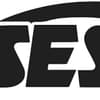Podcast
Questions and Answers
What is the primary function of Inventory Financing?
What is the primary function of Inventory Financing?
- To use inventory as collateral to secure funding (correct)
- To manage accounts payable and accounts receivable
- To discount invoices to a third-party financier
- To provide early payment to suppliers
What is the benefit of Invoice Discounting in relation to bad debt risk?
What is the benefit of Invoice Discounting in relation to bad debt risk?
- Reduces bad debt risk (correct)
- Increases the risk of bad debt
- Eliminates bad debt risk
- Has no impact on bad debt risk
What type of financing solution uses a company's assets as collateral?
What type of financing solution uses a company's assets as collateral?
- Supplier Early Payment
- Inventory Financing
- Receivables Financing
- Asset-based Lending (correct)
What is the primary function of Receivables Financing?
What is the primary function of Receivables Financing?
What is the benefit of Supplier Early Payment in relation to supplier relationships?
What is the benefit of Supplier Early Payment in relation to supplier relationships?
What is the primary function of Inventory Financing in relation to cash flow management?
What is the primary function of Inventory Financing in relation to cash flow management?
Flashcards are hidden until you start studying
Study Notes
Supply Chain Finance Certification
Inventory Financing
- A financing solution that allows businesses to use their inventory as collateral to secure funding
- Can be used to finance inventory purchases, production, or storage
- Benefits: increases liquidity, reduces stockouts, and improves cash flow management
Invoice Discounting
- A financing solution that allows businesses to receive immediate payment on outstanding invoices
- Involves selling invoices to a third-party financier at a discount
- Benefits: improves cash flow, reduces bad debt risk, and increases financial flexibility
Asset-based Lending
- A financing solution that uses a company's assets (e.g., inventory, equipment, property) as collateral
- Can be used to finance working capital, expansion, or restructuring
- Benefits: flexible funding, improved cash flow, and reduced risk
Receivables Financing
- A financing solution that allows businesses to receive immediate payment on outstanding receivables
- Involves selling receivables to a third-party financier at a discount
- Benefits: improves cash flow, reduces bad debt risk, and increases financial flexibility
Supplier Early Payment
- A financing solution that allows suppliers to receive early payment on their invoices
- Can be used to improve supplier relationships, reduce costs, and increase efficiency
- Benefits: improved supplier relationships, increased efficiency, and reduced costs
Cash Conversion Cycle
- The length of time between a company's purchase of inventory and the collection of cash from its customers
- A shorter cash conversion cycle indicates improved cash flow management
- Components: days inventory outstanding (DIO), days sales outstanding (DSO), and days payable outstanding (DPO)
International and Domestic Supply Chain
- International supply chain: involves the flow of goods, services, and information across national borders
- Domestic supply chain: involves the flow of goods, services, and information within a country
- Both types of supply chains require effective management to ensure efficiency, quality, and cost-effectiveness
Physical Supply Chain
- Involves the movement and storage of physical goods, products, and components
- Components: sourcing, production planning, inventory management, transportation, and warehousing
Financial Supply Chain
- Involves the flow of funds, credit, and financial information throughout the supply chain
- Components: payment terms, credit management, inventory financing, and supply chain finance
Digitization and the Information Supply Chain
- The use of digital technologies to manage and optimize the supply chain
- Involves the flow of information, data, and analytics throughout the supply chain
- Components: data analytics, artificial intelligence, blockchain, and the Internet of Things (IoT)
Note: These study notes provide a concise overview of the key concepts and components related to supply chain finance certification.
Studying That Suits You
Use AI to generate personalized quizzes and flashcards to suit your learning preferences.





